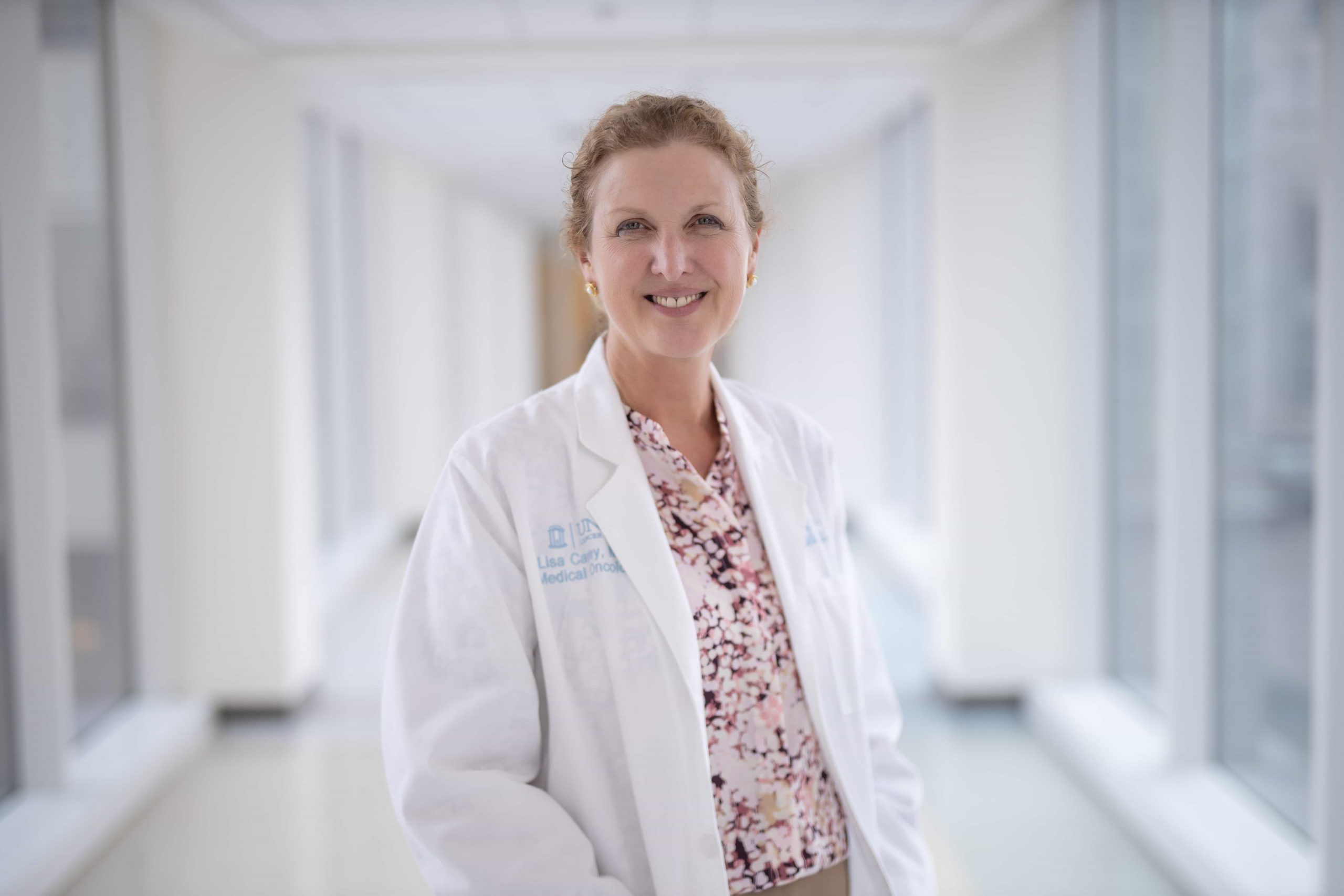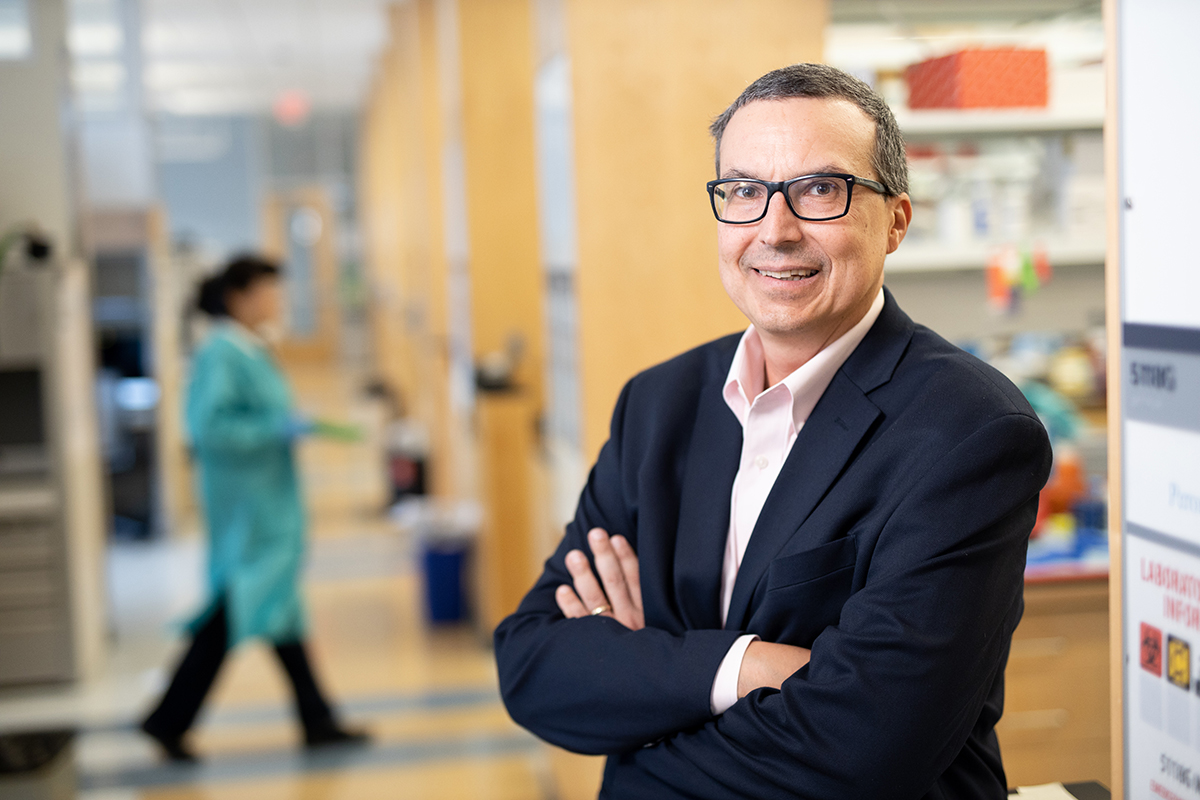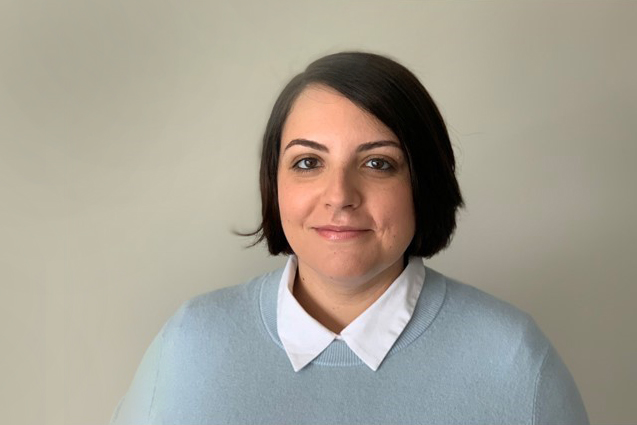Researchers at UNC Lineberger Comprehensive Cancer Center and colleagues have found that measuring activation of immune-system B cells may be better than measuring either T-cell activation or the total number of immune cells in and around a tumor, called tumor-infiltrating lymphocytes (TILs), in predicting whether HER2-positive breast cancer responds to treatment.

The findings were published on Jan. 5, 2023, in JAMA Oncology.
Understanding why cancers respond, or don’t respond, to therapy is crucial to effective and personalized treatment. In HER2-positive breast cancer, the immune system is key to the effectiveness of response to anti-HER2 drugs. Important cells in the body’s immune system include B-cells, which create antibodies that neutralize cancer cells and infections as well as T-cells, which directly fight cancers and infections.
Measuring immune system activation
The investigators combined the results of two large clinical trials, CALGB 40601 and PAMELA, to look at different measures of immune system activation. Six signatures of immune cell gene activation from B-cells were better at predicting whether the drugs would completely clear the tumor than measuring immune cell numbers on a microscope slide. These results may allow doctors to be more precise in choosing which drugs, and how many drugs, to use in treating HER2-positive breast cancer.
“When there are active immune cells circulating around a tumor, the cancer tends to be easier to treat and cure,” said Lisa A. Carey, MD, ScM, FASCO, deputy director of clinical science and the L. Richardson and Marilyn Jacobs Preyer Distinguished Professor in Breast Cancer Research at UNC Lineberger and corresponding author of the study. “This is important because determining immune cell activity may allow us to identify which women with HER2-positive breast cancer will do well with standard, or even minimized, therapy.”
The two trials focused on HER2-positive breast cancer, a form of the disease where the human epidermal growth factor receptor 2 (HER2) protein is overexpressed on the surface of breast cells. This type of breast cancer is most often treated with trastuzumab (HerceptinTM), a drug that targets the HER2 protein.
The 305 patients enrolled in CALGB 40601 received paclitaxel (a standard chemotherapy drug) and trastuzumab as well as lapatinib (TykerbTM), an inhibitor that blocks the action of HER2, or a combination of the two for 16 weeks. The 151 patients in PAMELA received trastuzumab and lapatinib for 18 weeks. In both trials the patients then proceeded to surgery to remove their tumors.
B-cell signatures associated with better survival

While TILs were associated with the elimination of breast cancers in the trials, six of seven B-cell immune signatures were most strongly associated with higher elimination rates. The six B-cell signatures were also associated with better survival while the TILs did not predict survival outcomes effectively.
This finding may have applicability beyond HER2-positive breast cancers. “We know that breast cancers have molecularly distinct features with differing biological bases and outcomes. In that regard, we need biomarker tools to guide treatment escalation and de-escalation for many types of breast cancer, in particular, HER2-positive and triple-negative breast cancers, which can be difficult to treat,” said Charles M. Perou, PhD, the May Goldman Shaw Distinguished Professor of Molecular Oncology, co-leader of the UNC Lineberger Breast Cancer Research Program and another author of this study. “Some of our previous studies have already shown the prognostic and predictive ability of B-cell-related signatures in triple-negative breast cancers. It would not surprise us if a similar analysis in triple-negative breast cancer found the same results as those in this current study of HER2-positive cancers.”

Aranzazu Fernandez-Martinez, MD, PhD, the paper’s first author and a research associate in Perou’s lab, said the researchers have created a large and integrated database combining gene expression and clinical data, including response to therapy and survival outcomes from over 1,000 women who are participating in clinical trials. “The analysis of these data will provide essential information for biomarker development and precision medicine in HER2+ breast cancer and the insights will inform clinicians when someone may need more – or less – chemotherapy, and more – or less – anti-HER2 drugs,” she said.
Authors and disclosures
In addition to Carey, Perou and Fernandez-Martinez, other authors at UNC include Tomás Pascual, MD, Katherine A. Hoadley, PhD, Patricia A. Spears, and Naim U. Rashid, PhD. Baljit Singh, MD, White Plains Hospital, New York; Paolo Nuciforo, MD, PhD, and Fara Brasó-Maristany, PhD, Vall d’Hebron Institute of Oncology, Barcelona; Karla V Ballman, PhD, and Jordan D Campbell, PhD, Mayo Clinic, Rochester, MN; Laia Pare, PhD, Reveal Genomics, Barcelona; Nuria Chic, MD, Hospital Clínic de Barcelona; Ian Krop, MD, PhD, Yale Cancer Center, New Haven, CT. Ann Partridge, MD, Dana-Farber Cancer Institute, Boston; Javier Cortés, MD, PhD, International Breast Cancer Center, Quironsalud group, Barcelona. Antonio Llombart-Cussac, MD, PhD, Hospital Arnau de Vilanova, Valencia, Spain; and Aleix Prat, MD, PhD, August Pi i Sunyer Biomedical Research Institute (IDIBAPS), Barcelona, Spain.
The research was supported by National Institutes of Health grants U10CA180821, U10CA180882, U24CA196171, R01CA229409, UG1CA233160, UG1CA23318, UG1CA233290, UG1CA233329, UG1CA233333, UG1CA233373, P50CA058223, U10CA180888, and UG1CA233160 and from The Breast Cancer Research Foundation, Susan G. Komen, Fundación SEOM, Becas FSEOM para Formación en Investigación en Centros de Referencia en el Extranjero 2018 and Fundación Científica Asociación Española Contra el Cáncer: Ayudas Investigador AECC 2021- INVES21943BRAS.
